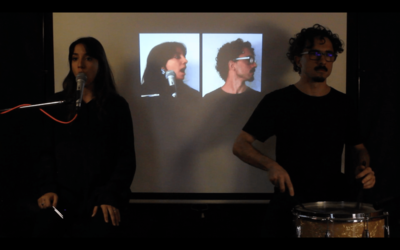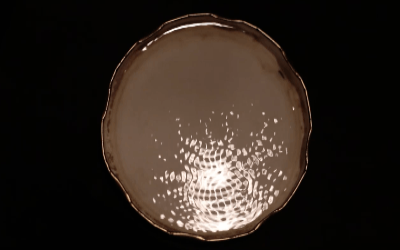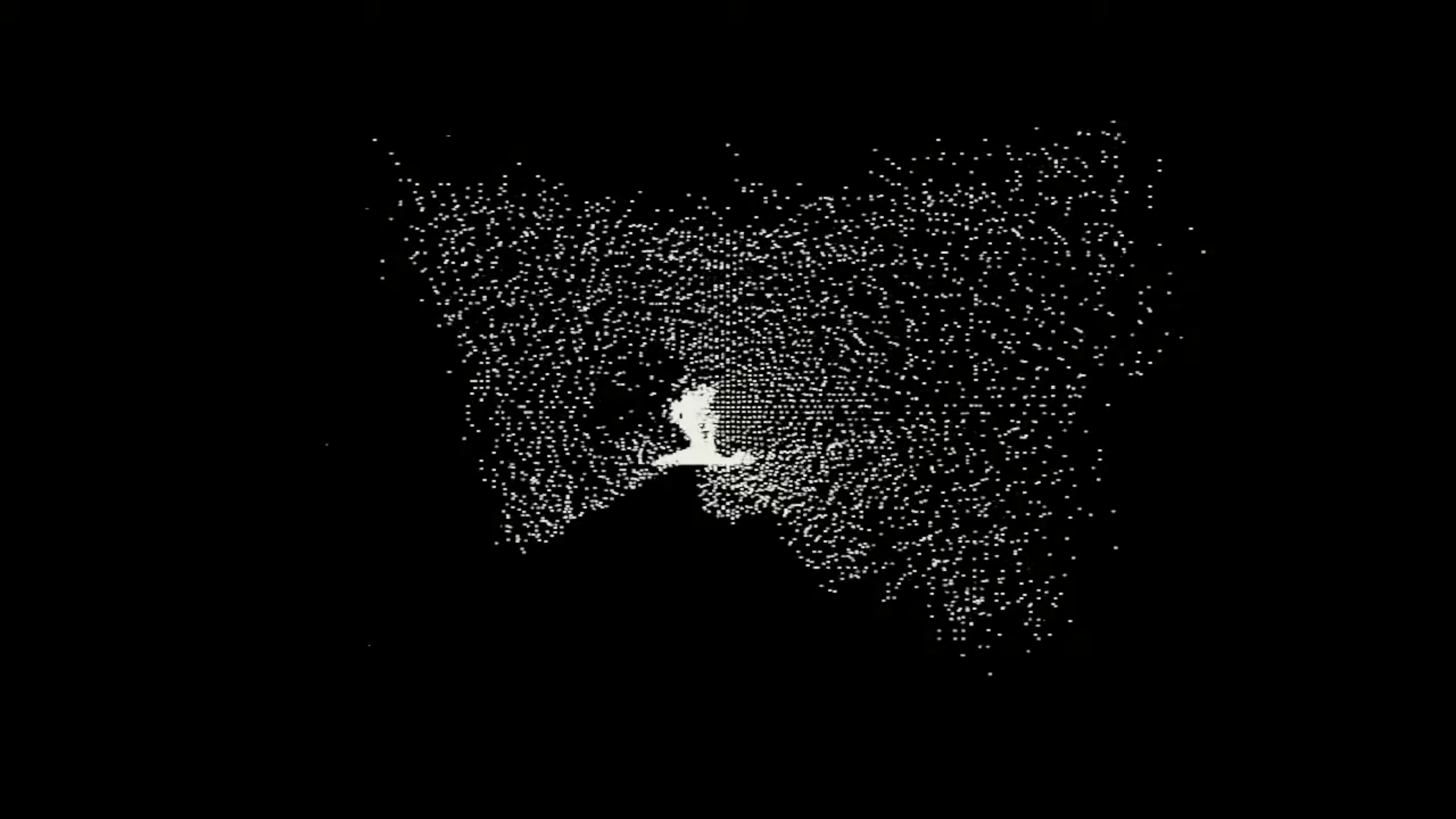Multimedia pieces
Yo, Tu Reflejo (2025)
 for voice, snare drum with brushes, electronics and live video
for voice, snare drum with brushes, electronics and live video
Work! Work! WORK! (2024)
 for drum set, electronics and projected text
for drum set, electronics and projected text
IRS (2021)
 for drum set, electronics and projected text
for drum set, electronics and projected text
El Retorno de una Hormiga (2019)
 for performer, electronics and live video
for performer, electronics and live video
Collaborations
- Esa extraña otredad (2024, dance-theater) by María Belén Rosaenz - Drums, performance and sound design - Watch teaser
- Palabra Migrante (2023, book) by Anahí Cáceres - Web animation (particle system in Processing) - Watch online
-
Simetrías (2019, dance-theater) by María Belén Rosaenz - Composition and sound Design - Watch teaser
Simetrías is a dance piece written and directed by María Belén Rosaenz. The piece was awarded with the PIME grant by the National University of San Martin (UNSAM, Argentina) and it was premiered in the city of Barcelona at the Centro de Estudios Filosóficos Eugenio Trías from Universitat Pompeu Fabra.